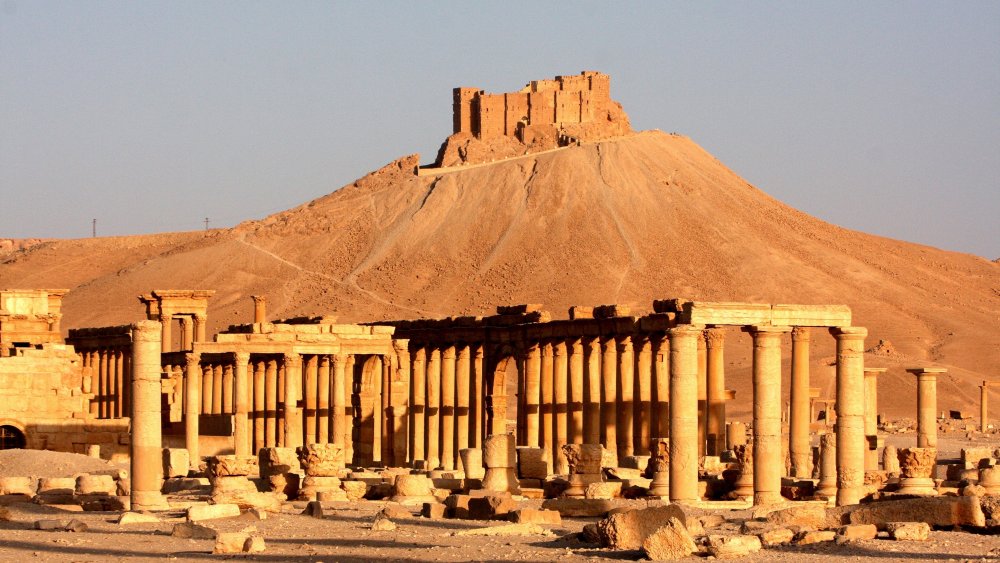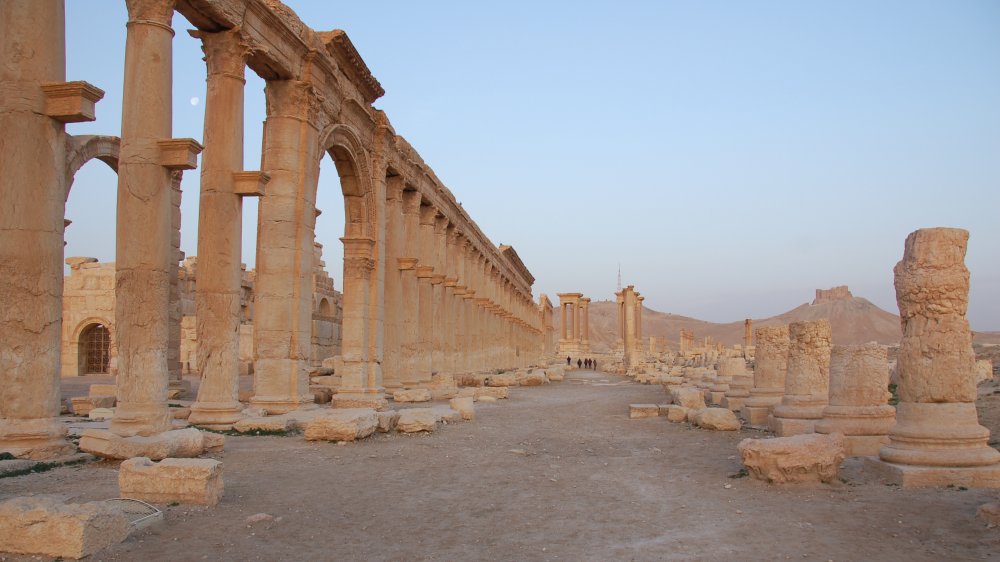The Desert City That Became One Of The Richest In The Roman Empire
Along with the loss of human life, news sources lamented the capture of Palmyra, once home to 100,000 people, by ISIS. "The catastrophe has happened, I am in absolute shock," Maamoun Abdulkarim, Syria's director of antiquities, told The Guardian in 2016. "I am losing hope, it looks like we have lost the city." While many of the movable artifacts, like pots, were moved to Damascus for safekeeping, the fear was that the physical structures of the city itself would face devastation. And sure enough, ISIS wreaked destruction upon Palmyra, shown by a photo series compiled by Reuters. Fortunately for archaeologists, the Syrian army managed to recapture the city in March of 2017. Once they had reoccupied the city it became clear that to the Italian archaeologist Paolo Matthiae that, as he told ANSAmed "[By] using both traditional methods and advanced technologies, it might be possible to restore 98 percent of the site.”
The archaeological importance of Palmyra is its extensive architectural remains that combine Greco-Roman influences with the style of its Parthian neighbors. To set the image of Palmyra, Nigel Pollard quotes Pliny the Elder's description of the city as the epigraph for his piece on the site: "Palmyra is a city excellent in its setting, the fertility of its soil and the pleasantness of its waters, and its fields are hemmed in ... by a vast stretch of sand. It steers its own course between the two great empires of the Romans and of the Parthians."
Fertility? Water? Fields?
Some may read Pliny the Elder's description of the sumptuous city that thrived in its relationship to the Roman Empire, and then look at the pictures of the Syrian ruins with some confusion. After all, it doesn't seem especially pleasant or watered. That then leads to one of the biggest questions concerning Palmyra: How did a city of such size survive, let alone thrive, in the middle of the desert?
In 2012, a collaboration between Norwegian and Syrian researchers headed by Jørgen Christian Meyer, a professor at the University of Bergen, discovered the secret of Palmyra's habitability. As Phys.org reported, the researchers realized that the city lay not in a desert, but an arid steppe with underground grassroots that kept the rain from sinking. The Palmyrians then collected rainwater with dams and cisterns, ensuring a stable water supply. The trick, as Professor Meyer explains, is not that the land itself is particularly unusual, but that the people living there were resourceful enough to use its attributes to address their needs: "Anyone can see how green the desert becomes after the rain. The Palmyrians must have realized the potential of this type of land, which covers large areas of our planet." Considering the desertification coming closer, the importance of this discovery extends beyond understanding the nature of life in Palmyra, which is worthy in itself, to include possible solutions to the food scarcity we might encounter in the hostile environs of post-climate-changed Earth.

